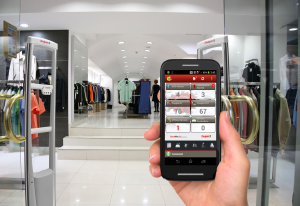 Shoplifting costs the retail industry million of dollars daily. The harm done to the businesses and the economy in general is socially and economically harmful, but employee theft hurts the company’s culture, damages trust between owners and employees, and financially are responsible for billions of dollars that companies lose due to this horrible crime. For more about this topic follow the links below.
Shoplifting costs the retail industry million of dollars daily. The harm done to the businesses and the economy in general is socially and economically harmful, but employee theft hurts the company’s culture, damages trust between owners and employees, and financially are responsible for billions of dollars that companies lose due to this horrible crime. For more about this topic follow the links below.
An Analysis of Employee Theft at a Specialty Retailer.
When I was a doctoral graduate student at the University of Minnesota during the late 1970s, I began conducting research on employee theft. At the time this was an area of criminology that was virtually unexplored. I found that it was very hard to study this subject then, since few retailers were willing to let a social scientist have full access to the records on this subject. Over forty years later, the scholarly literature on dishonesty in the workplace is still understudied and poorly understood despite the best efforts of a handful of researchers.
As such, I am always on the lookout for new and cutting-edge research on this topic. This month I wish to share the results of a quality employee theft study that was recently published as a doctoral dissertation. The author is Dana N. Baxter. She completed her research while studying under Dr. Dennis Giever at Indiana University of Pennsylvania. She finished her dissertation this past spring and graduated in May. She is presently an assistant professor at Davis and Elkins College in West Virginia.
A Snapshot of Employee Theft in the US
The majority of employee thefts are occurring in organizations with 500 employees or less. The sizes and types of thefts vary by industry, but smaller organizations across the spectrum exhibited high incidences of embezzlement overall.
The unfortunate reality of employee theft is every organization is at risk.
When we looked at the totality of federal actions involving employee theft over the calendar year, nearly 72% involved organizations with fewer than 500 employees. Within that data set, we found that four of every five victim organizations had fewer than 100 employees; more than half had fewer than 25 employees. Is there a connection between the size of an organization and the size of the loss? Our research suggests that there may be. While some of the largest losses occurred in organizations with fewer than 50 employees, in the aggregate, we note the following:
U.S. retail workers are No. 1…in employee theft
Light-fingered employees cost American stores (and consumers) more than shoplifters do.
It’s almost Groundhog Day, but for retailers, the holiday season is finally winding down.
“The four months from October through January are when stores see not just their biggest sales volume of the year, but also the most returns and exchanges,” says Ernie Deyle, a 30-year veteran of the retail loss-prevention wars who leads the business consulting practice at London-based data analytics firm Sysrepublic. “Unfortunately, the same four months account for about half of all annual shrinkage.”
That shrinkage, made up of missing goods from shoplifting and other causes, costs U.S. retailers about $42 billion a year, according to the latest Global Retail Theft Barometer, an annual industry study led by Deyle and inventory management firm Checkpoint Systems.
Of course, retailers everywhere deal with shrinkage, but there is one big difference between the U.S. and the rest of the world: Globally, dishonest employees are behind about 28% of inventory losses, while shoplifters account for a markedly higher 39%. Not so stateside, the study says, where employee theft accounts for 43% of lost revenue. That’s about $18 billion, or $2.3 billion more than the cost of five-finger discounts taken by customers.








